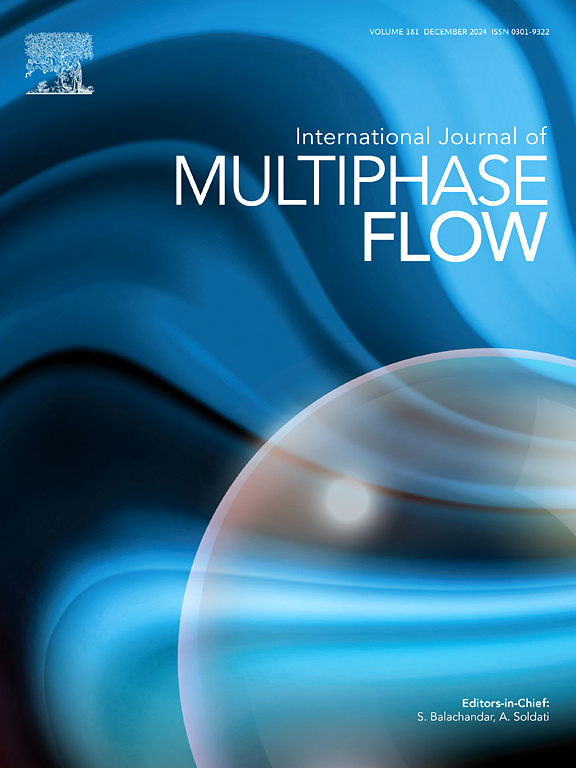Experimental analysis of velocity field characteristics within bubble wakes in fiber bundle
IF 3.6
2区 工程技术
Q1 MECHANICS
International Journal of Multiphase Flow
Pub Date : 2025-03-01
DOI:10.1016/j.ijmultiphaseflow.2025.105197
引用次数: 0
Abstract
Membrane bioreactors (MBRs) are commonly employed for wastewater treatment, coupling biological processes and filtration. Among the available configurations, vertical fibers are usually applied. The multiphase flow inside the MBR is complex and the relative motion of the bubble, the wall effect, the interaction with fibers, and the main involved phenomena are not fully understood. The present study concerns an analysis of the velocity field within the bubble wake under conditions with (WF) and without (NF) fiber bundle interaction. The experimental setup consisted of 144 fibers in a square tank with a width of 160 mm filled with water where single air bubbles are injected in the central position. The equivalent bubble diameter ranged from 9.85 to 18.7 mm. The velocity fields were measured in the water tank containing silicon carbide (SiC) particles illuminated by a laser sheet through the Spatial Filter Velocimetry (SFV) technique. Particles images were acquired at 37,500 fps and processed to obtain bubbles terminal velocities, wake velocity fields, temporal data series, and bubble-induced turbulence. The velocity field result revealed that under NF conditions bubbles smaller than 13 mm presents a zigzag motion, while for larger bubbles straight upward flow predominated. Under WF conditions, straight upward flow was observed for all evaluated bubbles. Furthermore, the flow field in the WF condition was contained within fibers, forming a like subchannel flow, and showed closed wake characteristics, while the NF condition shows an expanding wake. This reveals a reduction in bubble wake size for the WF condition. Intensity of velocity fluctuation was observed contained within the subchannels for WF conditions, while the affected area for NF was always larger for the tested cases.

求助全文
约1分钟内获得全文
求助全文
来源期刊
CiteScore
7.30
自引率
10.50%
发文量
244
审稿时长
4 months
期刊介绍:
The International Journal of Multiphase Flow publishes analytical, numerical and experimental articles of lasting interest. The scope of the journal includes all aspects of mass, momentum and energy exchange phenomena among different phases such as occur in disperse flows, gas–liquid and liquid–liquid flows, flows in porous media, boiling, granular flows and others.
The journal publishes full papers, brief communications and conference announcements.

 求助内容:
求助内容: 应助结果提醒方式:
应助结果提醒方式:


